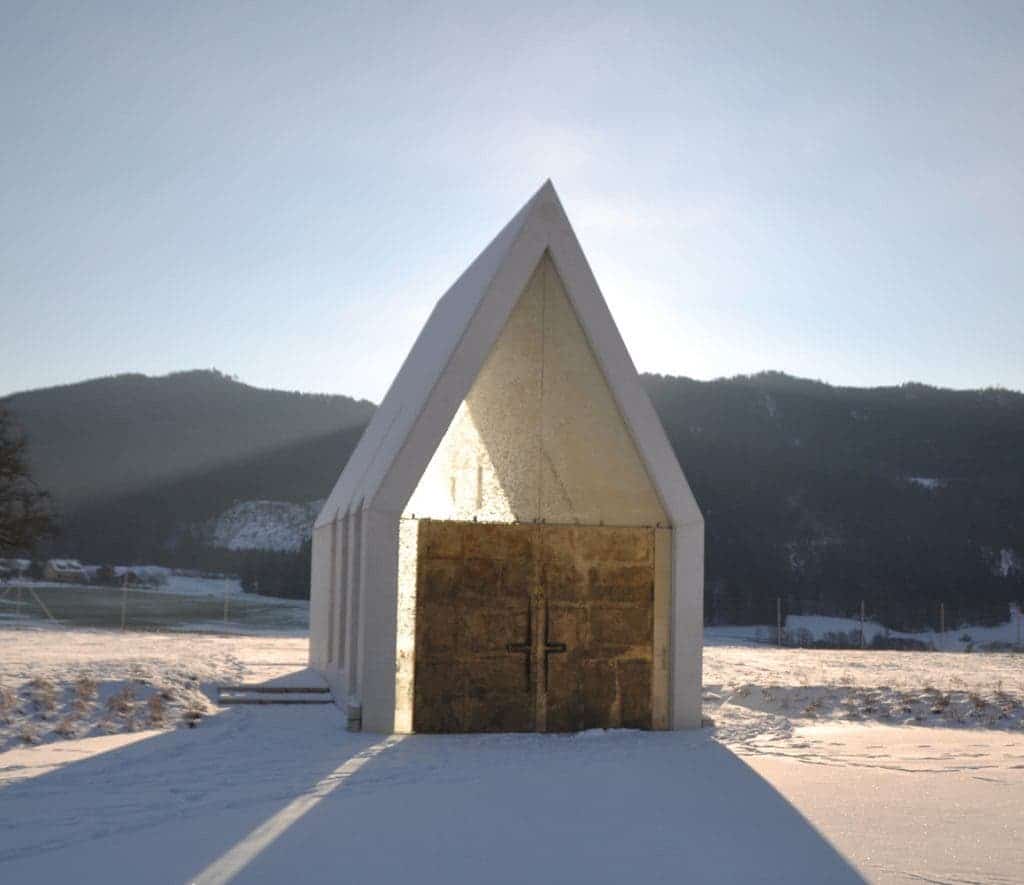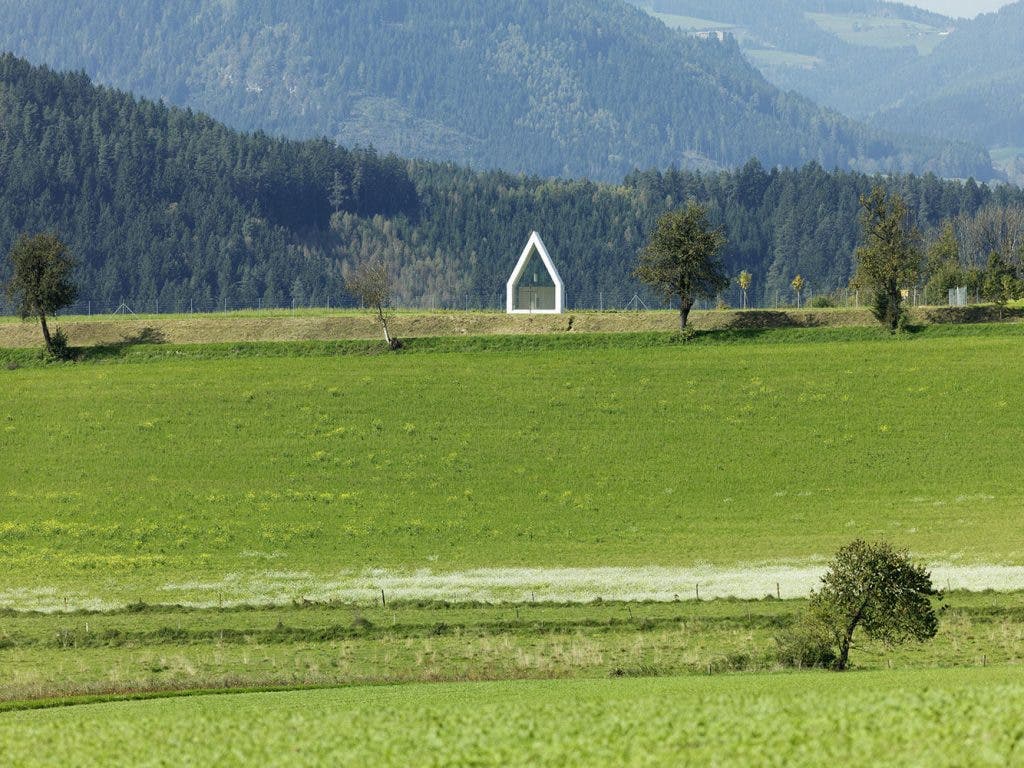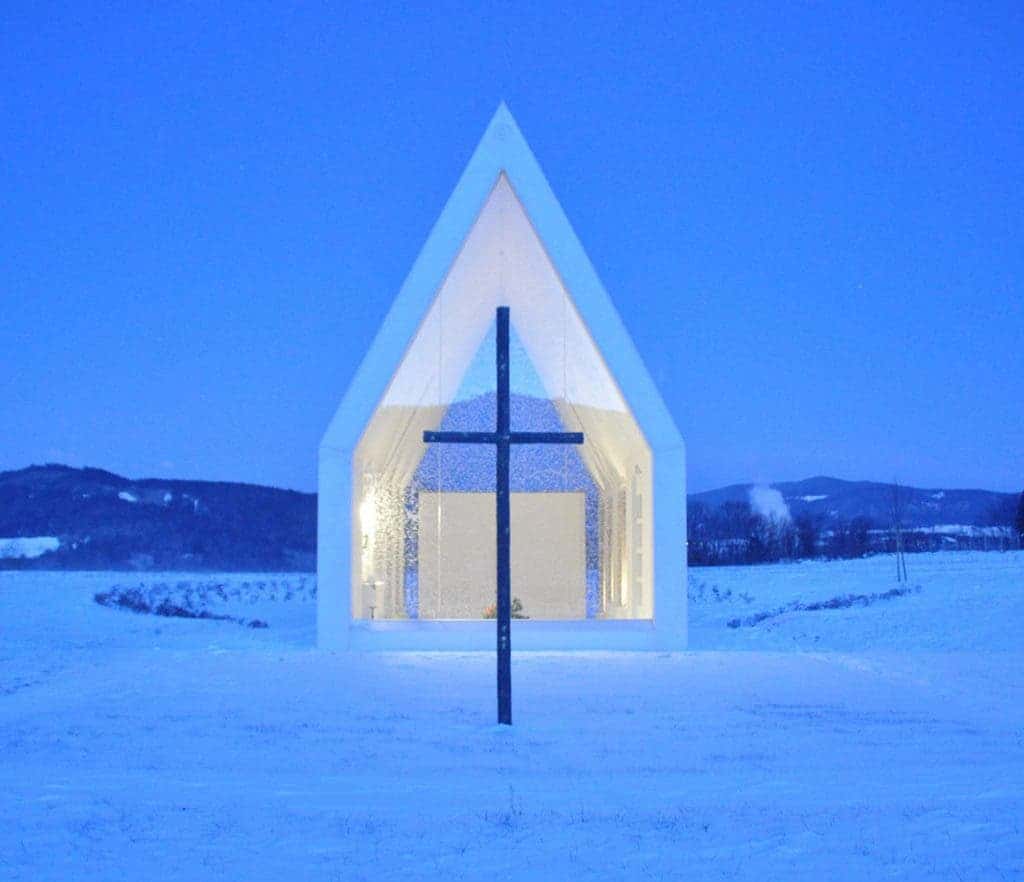Whether you’re religious or not, there’s a good chance this chapel will catch your eye – completed last year, the 7-square-meter Maria Magdalena family chapel is a unique architectural delight in the heart of the Austrian countryside. The minimalist design gives it a sense of tranquility and serenity.
Religious references are found throughout the chapel, but other than that, you probably wouldn’t label this as a church or a chapel. According to Inhabitat, alcoves located along the walls flanking the choir hold a statue of Maria Magdalene and 12 small urns. At night, the chapel is even more spectacular: it glows from the inside and is illuminated via fitted spotlights and hanging translucent cylindrical lamps.
The construction was built from white concrete ( SCC „self compacting concrete“). A town chapel has to exclude the outside world to attain tranquillity. Therefore, in most of the cases, the chapel walls have only a few openings.
Source: Werknutzungsbewilligung für Gerhard Sacher. loci cero. architectes, Graz.
All image credits: Gerhard Sacher














